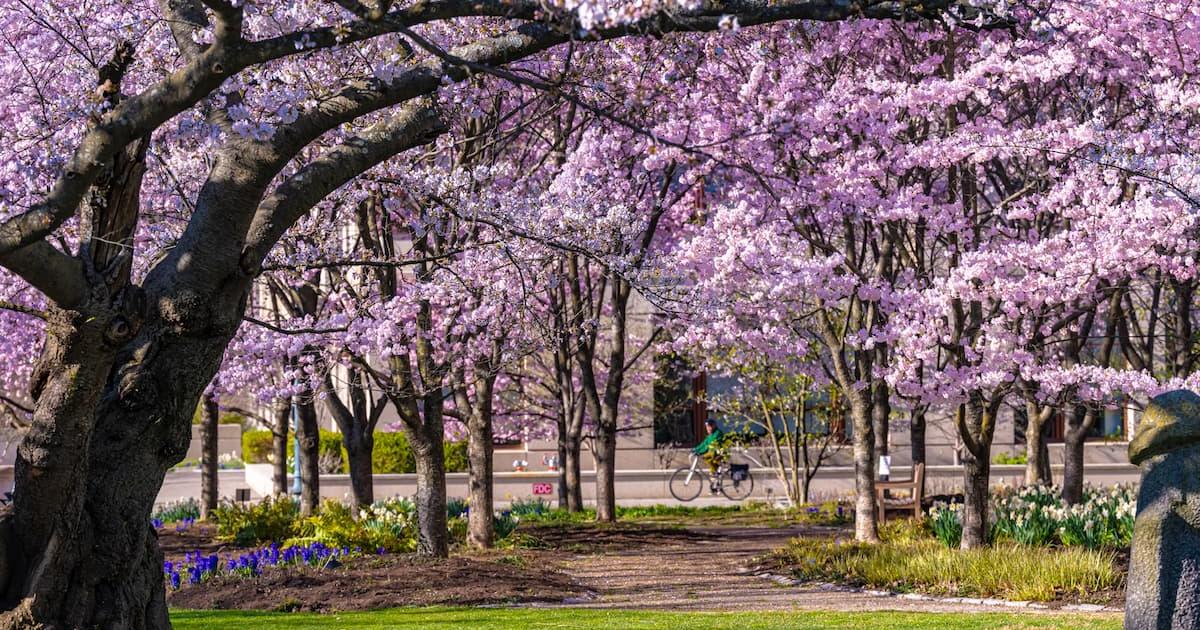Pretty in Pink: Where to Find Cherry Blossoms at AU
 Roll out the pink carpet—the star of spring in DC has sprung.
Roll out the pink carpet—the star of spring in DC has sprung.
The National Park Service (NPS) announced on March 17 that Washington’s approximately 9,000 cherry trees have reached peak bloom, marking the second earliest date on record.
DC’s first cherry trees—some of the 3,000 gifted to the US from Japan as a token of friendship—were planted in 1912. They appeared on AU’s campus 31 years later, when Syngman Rhee, who in 1948 become the first president of South Korea, planted four trees near the East Quad Building, formerly the home of the School of International Service. A short ceremony in April 1943 aimed to draw attention to Japan’s occupation of Korea.
With more than 200 cherry trees on campus today, the AU community doesn’t have to go far to catch a glimpse of the picturesque pink blossoms. In fact, the Washington Post last week named AU Park—the campus and the surrounding neighborhood—one of the best places to see cherry blossoms in the DC area.
The trees feature “a color pink that you don’t think you’d find in nature,” said AU groundskeeper John Boyle Ruiz, SIS/BA ’22, who posts weekly Tree Thursday features on the AU Arboretum and Gardens Instagram account. The cherry trees “really pop because they come in early springtime, when growth hasn’t [yet] returned from the deciduous trees.”
AU Now talked with Boyle Ruiz about three of the most photogenic spots on campus to catch different species of cherry trees.
East Quad Building
Among the more than 30 trees nestled between the East Quad Building and Nebraska Avenue are 21 Higan cherry trees—Prunus subhirtella, the most common cherry tree on campus. AU’s oldest cherry trees, planted more than 80 years, are also found here.
A sizeable number of Higan cherry trees, also known as the weeping Japanese cherry, can also be found in front of Nebraska Hall and near the entrance of the Katzen Arts Center. The flowers on these trees range from dark pink to white, according to NPS.
Kogod School of Business
You can find a colorful cluster of five Yoshino cherry trees, Prunus yedoensis, near Sudama in front of the business school. This fragrant hybrid cherry produces pale pink bloom with a white cloud-like appearance. DC reaches peak bloom every year once 70 percent of Yoshino cherry trees in the area are open.
East Campus
The 10 cherry trees at the East Campus garage include Prunus serrulatas, or East Asian cherry trees, one of the oldest cultivated species in Japan and the second most common species on campus. These trees produce pink petals that become lighter with age, according to NPS.
East Asian cherry trees are also located along the entrance to the President’s Office Building on Massachusetts Avenue and behind the Don Myers Technology and Innovation Building.
